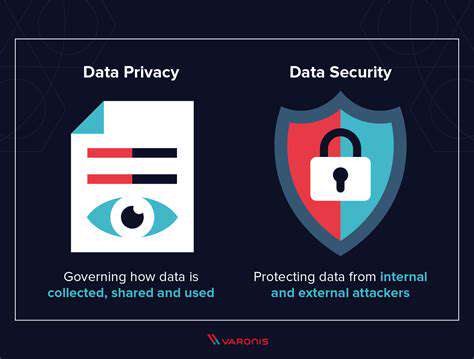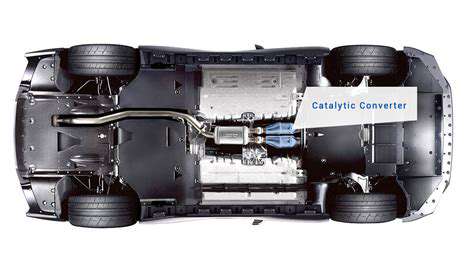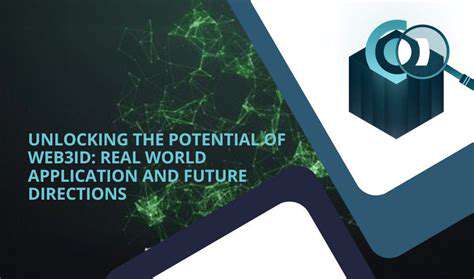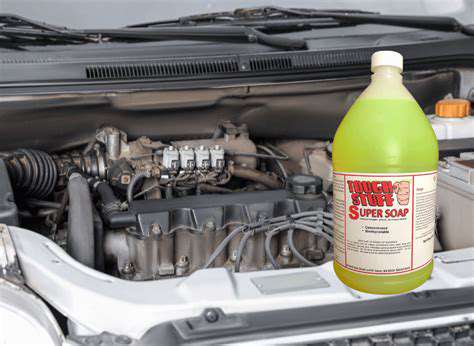Open Platform Advantages
Open platforms offer significant advantages in the connected car space, primarily stemming from their inherent flexibility and adaptability. This allows for a wider range of third-party integrations, fostering innovation and competition among developers. This, in turn, accelerates the development of diverse applications and services that enhance the user experience. Furthermore, open standards promote interoperability, meaning different systems and components can seamlessly communicate with one another, leading to a more integrated and user-friendly experience for the end-user.
The potential for a wider ecosystem of developers is a key strength. More developers contribute to more features, which benefits the overall automotive industry by driving innovation and efficiency, ultimately leading to a richer and more competitive market. Open platforms also foster a dynamic environment where new technologies and solutions can quickly be integrated, staying ahead of evolving consumer demands.
Open Platform Disadvantages
One of the primary disadvantages of open platforms is the potential for fragmentation. A multitude of different components and systems from various developers can lead to compatibility issues and challenges in maintaining uniformity across the entire platform. This complexity can also increase the risk of security vulnerabilities if not carefully managed and monitored.
Ensuring consistent quality across a vast number of third-party applications and integrations can be a significant hurdle. The lack of centralized control over the development process can impact the overall quality and reliability of the final product. These issues can also lead to longer development cycles and higher costs.
Proprietary Platform Advantages
Proprietary platforms offer a degree of control and integration that open platforms often lack. This allows for a more streamlined development process and tighter integration between different components of the vehicle's technology stack. For example, manufacturers can have more direct control over the user experience and can tailor the platform more effectively to their specific needs and brand identity.
Centralized control often translates into better security management. With a single entity responsible for the entire platform, there is a greater ability to identify and address potential vulnerabilities. This can lead to a more secure and reliable user experience. Additionally, proprietary platforms often benefit from more predictable development timelines and costs since the manufacturer has better control over the entire process.
Proprietary Platform Disadvantages
A significant drawback of proprietary platforms is the limited ecosystem of developers. This can hinder innovation and limit the availability of features and services. The lack of competition and a closed environment can also lead to slower advancements in technology. This can result in the platform lagging behind industry standards and potentially creating a less dynamic and engaging user experience.
Interoperability Concerns with Open Platforms
Interoperability, a key advantage of open platforms, can also present challenges. Different third-party developers may not always adhere to the same standards or have the same level of quality control. This can lead to compatibility issues and inconsistencies in the user experience. Maintaining interoperability across a large number of third-party integrations requires careful planning and ongoing maintenance.
Security Considerations in Open vs. Proprietary
Security is a crucial concern for any connected car platform. Open platforms, with their multitude of third-party integrations, can pose a greater security risk compared to proprietary platforms. The potential for vulnerabilities in third-party applications must be carefully mitigated. Proprietary platforms, while offering more centralized control, still face security risks, but they can potentially be better managed with a more controlled environment.
Cost and Development Time Differences
The development and deployment costs associated with open platforms can be unpredictable, depending heavily on the number of integrations and the complexity of the platform itself. This can be contrasted with proprietary platforms, which offer a more defined and potentially lower-cost development path due to the reduced complexity and fewer external dependencies. However, the long-term cost of maintaining and updating a proprietary system can eventually outweigh the initial cost savings.
Proprietary Platforms: Control and Consolidation
Proprietary Platform Advantages
Proprietary platforms, often developed by a single company or a tightly integrated group, offer a significant degree of control over the entire connected car ecosystem. This control translates to streamlined development processes, as all components of the system are designed and maintained in-house. Developers can tailor the platform to their specific needs and integrate features with greater ease, leading to a more cohesive and potentially faster rollout of new services. Furthermore, the internal nature of the platform allows for a high degree of customization and integration with existing company infrastructure, which can potentially lead to significant cost savings in the long run. This control often results in a more predictable and consistent user experience, because the platform is built around a singular vision.
Companies utilizing proprietary platforms often have the ability to tightly manage data generated by the platform, enhancing their ability to understand user behavior and preferences. This understanding can be used to develop more personalized services and targeted marketing campaigns. Data ownership and control are key advantages, enabling the company to leverage the accumulated knowledge for future product development and service enhancement. The ability to protect intellectual property and maintain a competitive edge is also a significant aspect of a proprietary platform, shielding unique functionalities from direct imitation.
Consolidation and Standardization
The consolidation of various features and services on a proprietary platform can lead to a simplified user experience. Users often find it easier to navigate and interact with a single, integrated system compared to disparate systems from multiple providers. This seamless integration of features can also eliminate the need for multiple applications and connections, reducing potential issues like compatibility problems and data discrepancies. This focused approach can improve the overall reliability and efficiency of the car's connected systems.
Standardization of components and interfaces is another crucial aspect of proprietary platforms. The shared language within the platform enables simpler and more efficient communication between different parts of the system. This uniformity leads to better integration of various components, improving overall system performance. This standardization streamlines maintenance and troubleshooting, making it easier to address issues and update the system as needed. A well-defined structure can result in a more predictable and reliable user experience.
Security and Privacy Concerns
Despite the potential advantages, proprietary platforms in the connected car space raise significant security and privacy concerns. Centralized control of the platform, while offering some advantages, also creates a single point of vulnerability. A breach in the platform's security could potentially compromise user data and vehicle functionality. The lack of open-source scrutiny and independent verification can make it more challenging to identify and mitigate potential security risks. This inherent complexity and potential for misuse necessitate robust security protocols and rigorous testing to minimize the risk of exploitation.
Privacy is another critical concern. The collection and use of user data on a proprietary platform are often less transparent than on open platforms. Concerns about the extent of data collection, storage, and potential misuse of personal information need careful consideration. Clear data usage policies and strong encryption protocols are essential to ensure user privacy and build trust. Regulatory compliance and ethical considerations regarding data handling are paramount for proprietary platform developers.
Traditional methods, while often reliable, can sometimes fall short in addressing the complexities of modern challenges. Innovative approaches, grounded in creativity and a willingness to explore uncharted territory, offer a compelling alternative. This shift towards novel solutions necessitates a departure from the familiar and a proactive embrace of experimentation and adaptability. It often requires a significant investment in research and development, but the potential rewards can be substantial.
Interoperability and Ecosystem Development
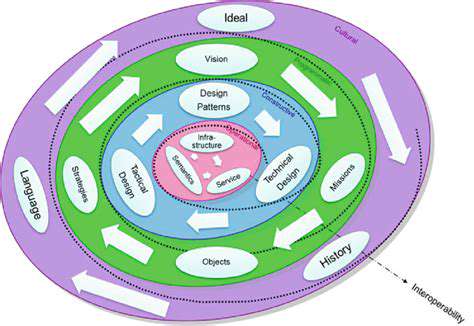
Interoperability: Bridging the Gap
Interoperability is crucial for the seamless exchange of data and functionality across different systems and platforms. This allows for greater flexibility and efficiency in developing applications and services. Without interoperability, systems can become isolated silos, hindering innovation and potentially limiting the overall value of the ecosystem. It's essential to establish clear communication protocols and standards to facilitate this exchange.
This process often involves the development of APIs (Application Programming Interfaces) that allow different components to communicate and share data. The design and implementation of these APIs are critical to ensuring that the interoperability is robust and efficient. Properly designed APIs make it easier to integrate new features and functionalities into existing systems.
Ecosystem Design Considerations
A well-designed ecosystem fosters collaboration and innovation. Key considerations include identifying the core components and their relationships, and ensuring that these components can effectively communicate and interact. It's about creating a robust framework that supports growth and adaptability, rather than a rigid, inflexible structure.
Careful consideration of user needs and potential future applications is crucial. This foresight can help avoid bottlenecks and ensure scalability, enabling the ecosystem to evolve and adapt to changing demands. Furthermore, clear documentation and support resources are vital for developers and users to effectively navigate the ecosystem.
Developer Tools and Resources
A vital component of any successful ecosystem is the availability of robust developer tools and resources. These tools should streamline the development process, making it easier for developers to build applications and services that leverage the ecosystem's functionalities. Comprehensive documentation, well-structured APIs, and readily accessible examples are essential for effective onboarding and support.
Tools that allow developers to test and debug their applications within the ecosystem are also highly valuable. Providing clear and concise documentation regarding the various tools and resources available will enable developers to build applications quickly and efficiently. This ultimately promotes rapid innovation and adoption of the ecosystem.
Community Engagement and Support
A thriving ecosystem relies heavily on a strong and engaged community. Facilitating communication and collaboration among developers, users, and stakeholders is crucial. Active forums, online communities, and dedicated support channels are vital in fostering a sense of belonging and encouraging knowledge sharing.
Regular workshops, hackathons, and meetups can further strengthen the community. These events provide opportunities for developers to connect, learn from each other, and collaborate on projects. A strong community fosters innovation and helps to ensure the long-term success of the ecosystem.
Security and Privacy Considerations
Security and privacy are paramount in any ecosystem, especially one that handles sensitive data. Robust security protocols and measures are essential to protect data from unauthorized access and misuse. Implementing encryption, access controls, and regular security audits are crucial steps in building a secure ecosystem.
Transparency in data handling practices and adherence to privacy regulations are equally important. Clearly outlining the data collection and usage policies fosters trust and encourages responsible interaction within the ecosystem. This ultimately contributes to a positive user experience and a reputation of security and integrity.
The Future of Connected Car Platforms: A Hybrid Approach?
The Rise of Hybrid Architectures
Connected car platforms are evolving rapidly, moving beyond the simple integration of sensors and communication modules. A key trend is the adoption of hybrid architectures, combining cloud-based services with on-board processing. This approach aims to strike a balance between leveraging the vast computing power and data storage of the cloud while maintaining crucial performance and security by processing sensitive data locally. This hybrid strategy is becoming increasingly important as the complexity of connected car functionalities grows, ensuring responsiveness and reliability even in areas with limited or unreliable network connectivity.
The ability to process data locally, such as real-time traffic information or safety-critical alerts, is crucial for enhancing the driving experience and ensuring safety. This localized processing mitigates latency issues that can arise when relying solely on cloud-based services, particularly in challenging network conditions. The hybrid approach is also beneficial in terms of data security and privacy, allowing for the encryption and processing of sensitive information directly on the vehicle.
Data Management and Security in the Cloud
As connected car platforms become more sophisticated, the sheer volume of data generated by these vehicles will require robust data management systems. Storing and processing this data in the cloud presents both opportunities and challenges. Security is paramount, as sensitive information about drivers, vehicle performance, and potential safety issues must be protected from unauthorized access. Secure data encryption and access control are essential for mitigating risks and adhering to data privacy regulations.
Effective data management strategies are crucial for extracting meaningful insights from the vast amounts of data collected. This includes not only storing data securely but also developing algorithms and tools for analyzing trends, predicting maintenance needs, and optimizing vehicle performance. The cloud's scalability and processing power can facilitate sophisticated data analytics, leading to improved services and enhanced user experiences.
On-Board Processing for Real-Time Responsiveness
Integrating advanced processing capabilities directly into the vehicle architecture is essential for ensuring real-time responsiveness of critical functions. On-board processing units can handle tasks such as sensor data fusion, predictive maintenance, and autonomous driving algorithms. This localized processing allows for quicker reaction times, crucial in situations requiring immediate responses, such as avoiding accidents or responding to changing road conditions.
The Role of Edge Computing
Edge computing serves as a crucial intermediary between the cloud and the vehicle. It acts as a processing hub closer to the source of the data, enabling faster data transfer and reducing latency compared to transferring everything directly to the cloud. This decentralized approach is particularly valuable for applications demanding low latency, such as real-time traffic updates or hands-free communication systems. Edge computing can also enhance data security by processing sensitive information closer to the source, reducing the risk of data breaches during transmission.
Software Defined Vehicles and Over-the-Air Updates
The evolution of connected car platforms is inextricably linked to the concept of software-defined vehicles. The ability to update vehicle software remotely, through over-the-air (OTA) updates, is vital for ongoing improvements and security patches. This continuous evolution enables platforms to adapt to changing user needs and incorporate new functionalities without requiring physical vehicle modifications. OTA updates are crucial for maintaining vehicle performance, enhancing safety features, and ensuring compliance with evolving regulations.
User Experience and Personalized Services
Connected car platforms are not just about technology; they are about enhancing the driving experience. The integration of personalized services, such as customized navigation, entertainment options, and vehicle diagnostics, is crucial for user satisfaction. A hybrid approach allows for the customization of user interfaces and services while benefiting from the scalability and flexibility of the cloud. Providing customized services through the platform while maintaining localized processing for critical functions is a key component of creating a truly connected and personalized driving experience.


